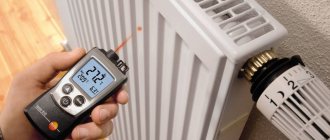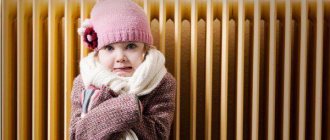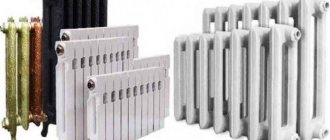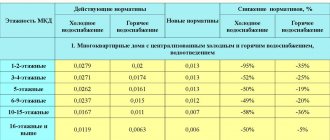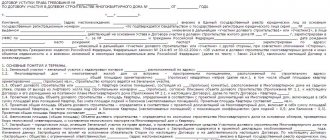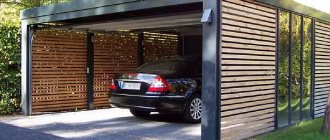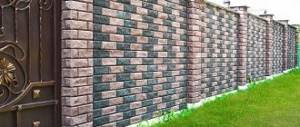Home/Heating Rules/Normal temperature in an apartment during the heating season in 2021-2022
In our country, many citizens reproach the organizations responsible for providing public services, as well as for regulating heat supply tariffs. This is due to the constant rise in prices, which is reflected in the receipts that owners receive monthly. Sadly, growth is not accompanied by an increase in the quality of services, and often, on the contrary, has the opposite trend. Considering the current situation, it is surprising that a person, paying huge bills, is faced with negligence on the part of house management authorities.
Normative base
The regulatory legal framework that specifies the issue of temperature standards in apartments during the heating season in 2021-2022 includes GOST and SanPiN.
Attention! If you have any questions, you can chat for free with a lawyer at the bottom of the screen or call Moscow; Saint Petersburg; Free call for all of Russia.
Attention
GOST R 51617-2000 establishes temperature parameters that must be observed in the autumn-spring period of the year. In accordance with GOST, living areas must be heated to at least +18°C. In the bathroom the temperature regime is slightly different - +25°C.
Lower requirements apply to the common property of homeowners (corridors and staircases)—+16°C.
SanPiN 2.1.2.2645-10 also sets standards for heating. The parameters are specified in the appendix to the designated standard.
Air temperature standards according to GOST
The standards are established by a number of legislative acts in the form of SanPiN 2.1.2.2645-10. The regulation sets the temperature regime in warm weather to be no lower than 20 °C, and in winter not lower than 18 °C.
Different objects have their own individual meanings, since the provision of heat must be carried out in accordance with their characteristics.
The minimum norm for residential properties is considered to be +18 °C, and in areas with five-day temperatures below 31 degrees - 20 °C. Any discrepancies with the data that are regulated will constitute a violation.
Norms t in °C during the heating season, depending on the nature of the rooms.
| Room | Optimal mode | Valid values |
| corridor | 20-22 | 18-24 |
| kitchen | 19-21 | 20-24 |
| living room | 20-22 | 18-24 |
| bedroom | 20-22 | 18-24 |
| children's | 20-22 | 18-24 |
| study | 20-22 | 18-24 |
| toilet | 19-21 | 18-26 |
| bathroom | 24-26 | 18-26 |
Read also: Installing a barrier in the yard
It is worth considering that the difference in heat between rooms in an apartment should not exceed 4 °C.
SanPiN 2.1.2.2645-10 “Sanitary and epidemiological requirements for living conditions in residential buildings and premises”
In corner apartments
Before the amendments to the legislation, GOST set the temperature for the corner version of the apartment 2 degrees higher, but after changes to RF PP No. 354 (the latest edition dates back to May 2021), the regime is set on a general basis.
Decree of the Government of the Russian Federation dated May 6, 2011 No. 354 “On the provision of utility services to owners and users of premises in apartment buildings and residential buildings”
Exterior walls
SNiP 02/23/2003 suggests that the difference in t between the external surface and the internal conditions of the rooms cannot be more than 4 °C.
Example: The room is 18 °C, which means the external wall cannot have a temperature below 14 °C, as I consider this a violation.
Such data should be monitored by the management company, which, if necessary, is obliged to insulate the walls to restore the required standards
SNiP 23-02-2003 “Thermal protection of buildings”
Floor
SNiP establishes a floor temperature of at least 18 °C. Moreover, the heated floor has a temperature of 26 °C if people are in the room constantly.
Important! In children's institutions, the optimal temperature is 24 °C.
Temperature in the apartment during the heating season according to SanPin in 2021-2022
Comfort is an individual concept. Some residents prefer cool, while others prefer heat. However, GOST designates the temperature at which normal conditions for life, good health and sanitary safety at home are ensured.
In accordance with the standards, the minimum permissible temperature in the premises is +18°C, and the maximum is +25°C . The purpose of the room is important. Premises and auxiliary structures in which a person spends less than an hour in total can heat up to only 14-16°C (staircases, interior spaces, wardrobe).
Heating season dates
The supply of heat to apartments depends on what heating system is used by the owner of the premises. Thus, in the case of an autonomous system, the period depends on the wishes of the residents themselves, and in a centralized system, on the decision of the compulsory health insurance, depending on the weather conditions established over a certain period of time.
To start centralized heat supply in 2021-2022, it is necessary to maintain the average daily outdoor temperature to 7°C for 5 days. The heating is turned off if the specified conditions are not met.
Heat rate control
Heat control is about optimizing heating while minimizing costs. To do this, it is necessary to improve thermal insulation and follow a number of rules. Among them, the sealing of window frames and openings, as well as the lack of closing of heating radiators, stands out. Furniture from them is installed at a distance of at least one meter.
Read also: Law on Domestic Violence
Additionally, various thermostat options are used that can be adjusted as conditions change. An example would be a slight drop in temperature during sunny weather.
How to reduce heat loss in an apartment
How to correctly measure the temperature in an apartment during the heating season?
In order to measure the temperature in a room, you must follow certain rules, including the need to carry out preparatory procedures:
| Draft | You can freeze not only because of poorly functioning batteries, but because of drafts that reduce the efficiency of heating the room. You need to carefully check how well the windows and interior doors are closed. In addition, measurements taken during drafts cannot be considered objective. |
| Measuring instruments | It is enough to have a household thermometer on hand. The main thing is to install it correctly. The measurement is carried out at a distance of a meter from radiators installed on a wall adjacent to the street, as well as at a height of one and a half meters. |
| Measurement confirmation | Measurements taken once cannot indicate that the temperature regime in the apartment is being violated. That is why it is recommended to take measurements several times. In accordance with GOST, the temperature must be within acceptable values, not allowing more than three degrees at night (such deviations are unacceptable during the day) . |
| Weather | Measurements are taken only in cold, cloudy weather. Otherwise, the scorching sun will not allow you to take accurate measurements, warming the room to maximum temperatures. |
The temperature is measured in several rooms at once. Of course, in the case of a one-room apartment, this rule does not apply.
Attention
Temperatures below 18°C indicate the need to call emergency services.
It is important to remember that official measurements will be made only if the citizen himself addresses issues not related to repair or preventative work on heating networks. After the measurement, specialists formulate a report.
The equipment by which measurements are taken must have complete technical documentation. It contains the technical characteristics of the device, as well as a certificate that it has passed mandatory verification. Equipment requirements are explained in detail in GOST 30494-2011.
The act contains the following data:
- date of formation;
- housing parameters;
- list of commission members;
- information received by the device;
- temperature;
- visas of commission members.
IMPORTANT
The document is drawn up in two copies. One remains with the specialists, and the second is transferred to the owner of the premises.
Indoor heat measurement
For an optimal procedure for measuring heat, several nuances must be observed. Conditions:
- measurements are not taken in sunny weather;
- A leak test is carried out in advance. This is necessary to accurately identify the state of the heat supply;
- measurements are made in at least two rooms, but there is an exception for a one-room apartment with a window that occupies at least 30% of the wall area.
You will also need to take into account that measurements are taken within 60-100 cm above the floor and 50 cm from external walls. The last indicator is also used for the heating device, since its proximity will affect the indicators.
If an incorrect heat indicator is detected, you will need to report this to the emergency dispatch service, which will dispatch specialists. During the inspection, a report will be drawn up that includes all information on the indicators. This act must be signed by all members of the commission. It is drawn up in two identical copies, one of which remains with the owner of the living space.
Read also: Law on Immunoprophylaxis
If an accurate measurement is required, then a special device is used that will take readings every hour. It is installed at a height of 1.5 meters from the floor and a meter from the external walls. This measurement option should be made without open windows or doors during neutral weather.
How to correctly measure the coolant temperature during the heating season?
Water acts as the coolant in a central heating system. In order to understand what temperature it is, it is enough to use several simple methods. So, the first of them is to measure the temperature of the water circulating in the batteries. To solve the problem, the coolant is poured into a glass, where it is directly measured by a thermometer.
The second method is to measure the temperature on the battery. A simple alcohol device, fixed to the radiator and covered with a material that does not allow heat to pass through, is suitable.
For your information
It is more difficult to take measurements yourself, because professionals use high-precision instruments consisting of a immersion probe and electronic filling. However, this is real, and without significant errors in the readings.
How to correctly measure the temperature in a living room
According to GOST 30494-2011, measuring indoor temperature during the heating season can only be carried out if the temperature outside the window is below -5 °C. It is also prohibited to take measurements during daylight hours with a cloudless sky. It is believed that the sun can artificially increase the real microclimate indicators.
Mikhail Suvorov
Leading lawyer of the Legal.Center portal. Experience – 26 years
Ask a Question
The temperature is measured by a specialist using a professional ball thermometer, which must have complete technical documentation. All requirements for the device are specified in GOST 30494-2011.
The measurement is carried out in the center of the room, at a distance of 50 cm from the walls, at a height of 1 meter from the floor.
Normal temperature in a corner apartment
Corner apartments have one feature - the area of their external walls is noticeably larger than that in ordinary apartments. This directly affects the room temperature. If we talk about standards, then corner apartments should be heated to an optimal temperature of twenty degrees. The specified temperature is established by the rules for the provision of utilities in apartment buildings, approved by Decree of the Government of the Russian Federation No. 354. Similar requirements are established by GOST R 51617-2000. According to the standard, the optimal temperature in corner apartments should be 20°C. In addition, GOST refers to the corresponding SNiP. The temperature should not fall below this mark and for this, additional heating radiators are installed in rooms adjacent to the street.
Attention
Additional devices are provided at the design stage and allow maintaining the required temperature in the premises and preventing the formation of mold. It is important to note that rooms located on the first and last floors of buildings are subject to additional temperature loads from the street. So, in the first case, the cold comes from the floor, and in the latter - from the ceiling.
Factors affecting the temperature in the apartment
The coolant temperature directly affects the microclimate in the apartment. There are also indirect reasons why rooms may be colder than they should be. The temperature in the room is affected by:
- Air speed . The higher the speed, the more drafts there are in the apartment. Drafts can form in areas of windows, doorways, and in areas where floor slabs meet. The number of drafts often depends on the quality of construction of the house.
- Humidity . Humid rooms are more difficult to warm up than rooms with dry air.
- The location of the apartment relative to the cardinal directions . The winter sun provides almost no warmth, but its absence is immediately noticeable. Rooms with windows facing north will always be 0.5 °C colder.
- The location of the apartment relative to the corner of the house . If mistakes were made during the construction of the house, then the corner rooms can be much colder than the interior ones. That is why in corner apartments the minimum permissible temperature is 2 °C higher.
- Air temperature in common areas . According to GOST 30494-2011, the temperature in lobbies and staircases must be at least 14 °C. If residents regularly ventilate stairwells or the entrance door does not close, then the temperature in the apartments may drop below normal.
When can I file a complaint?
Having carried out personal measurements and made sure that the apartment is cold, the owner must notify the emergency service about this. It does not matter in what form the application will be sent (in writing or by telephone). After registering the resident’s signal, the application is registered and specialists are sent to the address to measure the temperature of the air and coolants.
The visits of housing and communal services representatives are carried out quite quickly. As a rule, this happens no later than half an hour from the moment the call is received by the dispatch service.
IMPORTANT
After drawing up the inspection report, the tenant receives a copy that indicates the presence of violations in the provision of public services to him.
Thanks to this document, the owner of the apartment will be able to defend his rights in a dialogue with the management company, as well as file a complaint with the concerned authorities, including the housing office.
Temperature measurements
Before measuring what heating temperature has set in the room, you need to carry out preparatory measures.
They consist of:
- eliminating drafts. Residents may feel cold not because the heating efficiency is low, but because of the formation of a draft in the apartment. This factor affects the reduction in temperature in the rooms. If the measurement is made under such conditions, it is not reliable;
- correct installation of the thermometer. You can use a household appliance. Measurements are carried out when the device is installed at a distance of 1 meter from the radiator. The requirements also relate to height - at least 1.5 meters above the battery located on the wall adjacent to the street;
- repeated measurements. If 1 result shows that the regime is not being followed, this does not indicate a violation. You need to take measurements several times. At night, the temperature can decrease by 3 divisions compared to established standards.
It is only necessary to measure the temperature in central heating in cold and cloudy weather. Otherwise, exposure to sunlight will affect the results. These actions should be performed in several rooms at once.
Please note: this rule does not apply to a one-room apartment.
If the temperature in the house is less than 18°C, you will need to call emergency services . Upon arrival, specialists take their own measurements and formulate a report.
Drawing up a report by the emergency service
To take measurements in the heating system, employees of this service can only use equipment for which there is technical documentation. The act specifies the characteristics of the equipment used. A certificate indicating that the device has been tested is also required.
The equipment must meet the requirements specified in GOST 30494-2011.
The act drawn up by emergency service employees states:
- Date of preparation;
- room dimensions;
- list of commission members;
- temperature regime;
- information about the device used for measurements;
- signatures of the commission members.
The act is drawn up in 2 copies, one of which remains with the owner of the apartment.
Rules for measuring temperature
The heat carrier of a central heating system is water in the pipes. Several methods can be used to measure the temperature regime of a given resource.
The following methods are used:
- measuring the temperature of the water that circulates through the batteries. The liquid is poured into a glass, into which the sensors of the measuring instruments are then lowered;
- The measurement is made in relation to the temperature on the battery. An alcohol thermometer is used, which is attached to the radiator and covered with a metal lid on top to prevent heat from escaping.
Self-measurements will not be accurate, since emergency service specialists have professional equipment.
Step-by-step instructions and required documents when filing a complaint
In order to competently draw up a claim, it is necessary to prepare a sample and follow the rules for document flow of such papers. The claim consists of a header, the text of the document itself and the applicant’s visa.
The complaint for non-compliance with the temperature standard in the apartment during the heating season in 2021-2022 includes the following information.
In the header:
- addressee's name;
- applicant details;
- details of the contract for the provision of utility services;
- link to microclimate standards in residential premises;
- information about the measurement results and the report (with the report attached);
- consequences of violations (compensation);
- requirement for the provision of appropriate quality services.
The center of the document indicates its type, that is, the claim.
At the beginning of the text, it usually states the basis on which the company provides heating services and the requirements for their quality. First of all, reference should be made to the resolution of the Government of the Russian Federation.
After this, the violations identified during the measurements and noted in the report are described.
Next, you need to outline your requirements. Firstly, it is necessary to identify the need to eliminate the problem as soon as possible, and secondly, to recalculate the fee for the provision of heat supply services.
IMPORTANT
The document is printed in two copies, which are signed by the owner of the premises and submitted to the housing and communal services authority. One copy remains with the secretary of the organization, and the second copy is marked with the incoming number and date.
complaints for non-compliance with the standard temperature in the apartment during the heating season in 2021-2022 are possible.
Optimal temperature
The optimal temperature in residential premises, as well as humidity, is established by the interstate standard GOST R 51617–2000. According to this document, the temperature in the bedroom, living room and corridor should fluctuate between 20°C and 22°C. The upper threshold for a living room is 24°C. In the bathroom, GOST sets the standard at 25°C, in the toilet - 18°C, as well as in utility rooms (pantry, drying room). For the kitchen the value is set at 19–21°C.
In the hot season, the temperature in the apartment should rise by 1–2°C, no more. The maximum permissible room temperature in summer is 25°C.
Temperature in the nursery
The microclimate in a children's room is somewhat different from ordinary living quarters, because a child, being active and mobile, needs a cooler environment. Moreover, the temperature in the nursery greatly depends on the age of the child. So, the baby needs warmer air - 23–24°C. Children from three years old feel more comfortable in cool temperatures - 18–19°C. Then, as the child grows up, the temperature is adjusted to the “adult” value of 20–22°C.
An excessively high temperature in the nursery forces the child’s body to regulate its heat exchange using sweat glands. As a result, the baby becomes sweaty, and diaper rash and redness may form. Moreover, losing a significant amount of moisture through sweat, the child begins to suffer from dehydration - this leads to pain, problems with digestion of food, as well as diseases of the oral cavity caused by insufficient saliva production.
Bedroom temperature
The air in the bedroom should not be too warm - no more than 21°C, ideally 19°C. You've probably noticed that it's almost impossible to fall asleep in a hot room. Because of this, many people ventilate their bedrooms before bed—temporarily lowering the temperature to help them drift off more peacefully. Unfortunately, from the point of view of microclimate regulation, this measure is not entirely correct.
The coolness in the bedroom must be maintained not only at the moment of falling asleep, but also throughout the entire duration of sleep, so simply ventilating the room is not enough. Of course, it never hurts to freshen the air before bed, but if late at night the temperature in the bedroom rises again to 22–24 ° C, sleep will be restless, and in the morning you will wake up completely exhausted.
Another reason to keep your bedroom temperature lower is to look good. In a cool environment, our body releases melatonin better during sleep. This substance helps fight aging, smooths out age-related wrinkles and improves the color and tone of the facial skin.
Kitchen temperature
The microclimate of the kitchen greatly depends on the appliances installed in it and the intensity of their use. The optimal temperature in this room is 19°C, but often there is no need to regularly maintain this temperature.
The main device that affects the temperature in the kitchen is the stove. A gas burner emits more heat into the air, and therefore in a kitchen equipped with it it is worth lowering the temperature by 1 degree - the lack of heat is compensated by cooking over a fire. Active use of the oven also significantly insulates the room.
If household members hardly use a stove or oven, preferring an electric steamer or multicooker, it is worth, on the contrary, raising the temperature to 20°C - such appliances emit little heat and do not warm the air in the room.
Bathroom temperature
The temperature in the bathroom should not be lower than 23°C, optimally 25°C. This high rate is due to two simple reasons. Firstly, high humidity at low temperatures creates a feeling of chilly cold and unpleasant dampness, and secondly, wet skin feels the temperature even lower than it actually is.
To prevent mold from growing due to the combination of heat and humidity, be sure to ventilate the bathroom after taking a shower or other water procedures. Leave the door open for at least half an hour - this prevention is usually enough to prevent the development of fungus on the walls.
Deviations from the norm
Reducing the air temperature in the apartment below the specified standards entails negative consequences:
- Risk of colds. Hypothermia very often causes unpleasant symptoms such as chills, runny nose, and sore throat.
- Reduced humidity. Cold air has less humidity than warm air.
- Constant tension in the body. If our body is not warm enough, it tends to expend energy and warm itself up. This, accordingly, reduces immunity and energy - constantly spending energy on warming up, we leave ourselves little energy for active movements.
If the room is warmer than specified in the standards, this leads to the following consequences:
- Peeling of the skin. In young children it may also manifest itself in the form of dermatitis. Due to the presence of microcracks, pathogenic bacteria easily penetrate into the skin, causing inflammation.
- Drying of the mucous membrane. Warm air, even well-humidified, does not provide our mucous membranes with sufficient moisture. If you regularly breathe such air, you can dry out your nasopharynx, which will result in a sore throat and vulnerability to pathogenic bacteria and viruses.
- Digestive problems. Warm air also affects the condition of the gastrointestinal mucosa. Without producing enough mucus, our body cannot maintain proper digestion. This can cause abdominal pain and colic in young children.
- Risk of hypothermia. Oddly enough, increased temperature in the apartment can cause hypothermia. In a hot environment, our sweat glands begin to actively work, trying to cool us down. If at this time we go, for example, outside, where it is not so warm, we can easily become hypothermic and catch a cold.
Possible outcomes of the complaint
If the housing and communal services organization has not fulfilled the requirements set out in the complaint, then more drastic measures should be taken and written to higher authorities. Thus, a repeated complaint can be sent to:
- Regional Housing Inspectorate;
- Prosecutor's Office;
- Rospotrebnadzor.
The designated authorities have the right to consider the complaint within thirty days. However, even before the end of the proceedings, the owner guarantees that the housing and communal services company will wake up and try to correct the current situation.
It is important to remember that appeal to higher authorities can be carried out not only after consideration of the claim in the primary authority. The document can be sent to both addresses in parallel.
Responsibility of housing and communal services and the Management Company for violation of temperature conditions.
According to decree number 354, organizations providing public heating services may allow breaks associated with heating residential premises, limited by the following time characteristics:
- up to a day within a month;
- at a time up to 16 hours, if the temperature is between 12°C and 18°C;
- at a time for up to 8 hours, if the temperature is between 10°C and 12°C;
- at a time for up to 4 hours if the temperature is between 8°C and 10°C.
Attention
There are cases when the heat supply does not stop, but the coolant temperature does not correspond to the standard. Thus, at night, in contrast to daytime, a deviation of the standard temperature of up to 3°C is allowed.
In case of deviation from the assumptions established by law, utilities are responsible for the quality of the services provided. Thus, the tenant of the premises, as well as their owner, has the right to demand compensation in the form of a recalculation of the payment for consumed heat.
Are interruptions in the heat supply acceptable?
In addition to the question of what temperature should be in the apartment, it is important to know about the permissible periods for turning off the heating.
Decree of the Government of the Russian Federation No. 354 of 2011 stipulates that heat must be supplied around the clock and without interruption. However, in a number of situations, turning off the heating is allowed. But the total shutdown period within a month should not exceed 24 hours.
You also need to take into account the air temperature in residential premises at the time the heating is turned off:
- If it is not higher than 12 degrees, you can turn it off for no more than 16 hours.
- At a temperature of 10-12 degrees - for 8 hours.
- And within 8-10 degrees - no more than 4 hours.
If utility services fail to solve the problem within the allotted time, then for each hour exceeded, a payment reduction of 0.15% is provided.
What kind of compensation can you expect?
The legislation allows the applicant to recover the following amounts from the management company:
- 0.15% of the heating fee hourly, in excess of the standard that allows heating to be turned off in apartments;
- 0.15% of the heating fee hourly, at a time when the room temperature does not meet the standards.
As for recalculation, the tenant has the right to count on a larger amount. For example, in the winter season, the management company issues a heating bill to the owner for 2,700 rubles. It's cold in the rooms. Not wanting to overpay, the property owner called the emergency service and took measurements, based on the results of which a report was drawn up, dated December 4. However, the company did not want to resolve the situation and increase the heating of the coolant to the established standards.
Thus, it is very simple to find out the amount of compensation for December: 2700 x (0.15% x 624 hours) = 2700 x 0.936 = 2527.2 rubles. The owner will have to pay practically nothing for the month and this is fair, since he did not receive from the company the quality of services stated in the standards. Naturally, the Criminal Code and the housing and communal services authority will not return such money. That is why the next stage of the proceedings will most likely be a trial.
Arbitrage practice
Court decisions were often made in favor of the applicant. As an example, we can consider the case of a claim by a resident of the Perm region. She sued the Criminal Code for one hundred thirty-six thousand rubles.
It all started when the homeowner filed a claim on the grounds that the temperature in her apartment did not exceed 15°C during two winter periods. The rules require that it be maintained at a level not lower than 18 °C in residential premises (20 °C in corner rooms).
Representatives of the management company repeatedly carried out measurements confirming the plaintiff’s correctness. Among other things, the woman fell ill and ended up in a medical facility.
After numerous complaints, the Criminal Code did not take the necessary measures and did not recalculate, which prompted the victim to resort to the help of the court.
During the proceedings, the Criminal Code tried to prove that they did not have an agreement with the plaintiff to provide her with heat supply services. However, the city court made a decision in favor of the homeowner, since it was the company that was responsible for transferring funds to resource supply organizations, which was confirmed by the collective agreement of the owners for the management of the house and the management company, as well as an agreement with the territorial housing and communal services department.
Having studied all the materials, the court decided that the management company must recalculate the heat supplied to the citizen by 77 thousand rubles, pay 38.5 thousand rubles as a fine and 20 thousand rubles as moral damages.
Heating season in Russia
The heating season is a period of the cold season during which residential buildings are provided with heat or thermal energy according to established heating standards. There is no specific duration established in Russia. Everything depends on weather conditions.
The standard heating season lasts in Russia from October to April. But each region has its own temperature and weather, so officials have established rules for determining the beginning and end of the heating season:
- The beginning is established on the condition that the average daily street temperature is minus 8 degrees or below for five days in a row;
- Completion is established provided that there is warm weather outside the window of 8 degrees and above for five days in a row.
Preparation for the heating season begins one and a half to two months before it starts. Preparatory activities include:
- checking the integrity of heating devices and structures;
- checking the performance of thermal equipment of boiler houses;
- checking meters and metering devices;
- commissioning works;
- checking for compliance with the standard water temperature in heating radiators in residential premises, etc.
Residents are notified in advance about preparations for the heating season by posting relevant notices on their entrance doors.
IMPORTANT!
Preparation is a mandatory stage before the start of the heating season, since the check allows you to prevent emergency situations, identify the reasons for exceeding heat consumption standards in the MDC, and provide residents with quality service.
In private households, the owner is responsible for commissioning work. But gas and utility companies conduct annual fitness inspections of equipment. If violations are detected, the owner will receive an order requiring them to eliminate the comments.
Nuances
In terms of the provision of heat supply services, standards and timing of the heating season, you can come across acts of the subject that run counter to generally accepted norms. This largely depends on the climatic characteristics of the territory in which a person lives.
In addition, starting from 2014, regions began to stand out clearly due to differences in heat supply tariffs. Thus, the difference between receipts in one region may differ significantly from the fees charged in another region.
Comments Showing 1 of 1
- Tatyana 19:05 04/08/2021
Thank you for a very useful and important article. At Nevsky in winter, in a corner apartment on the top floor, the temperature is +16+17 degrees and you can’t find the extreme, no one wants to draw up an act, we are freezing and paying up to 3000 rubles. When will this chaos end? Let us now be more literate - write to all authorities.Answer
